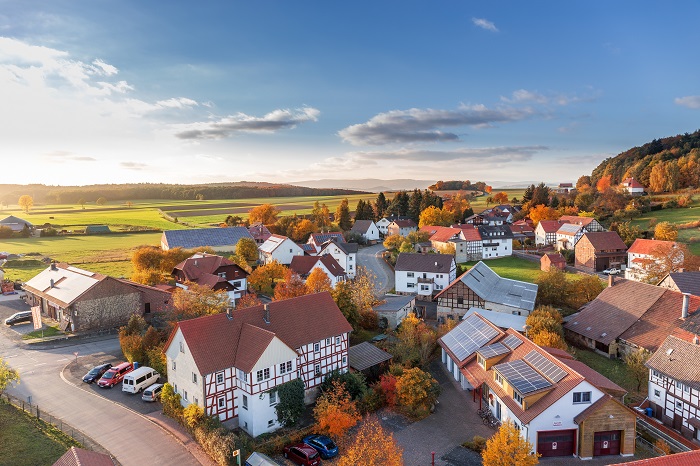How can small, rural communities attract new residents? What kinds of services and amenities are individuals looking for when considering a move to a new community? How can regional drone delivery services and AAM contribute to urbanization efforts?
These are some of the questions that Georgi Georgiev—an urban planner with extensive expertise and experience in Foresight analyses on Advanced Air Mobility integration in Europe—and his colleagues at Dr. Georgiev Consulting GmbH are seeking to answer.
Since late 2022, Georgiev’s Bayern, Germany-based firm has been collaborating with doks. innovation GmbH | inventairy and Stadtentwicklung Bebra GmbH on the REGUAS project. The project is focused on the “REGulated regional UAS-based supply concept” or the use of uncrewed systems to transport multidimensional goods in rural regions. Specifically, the project is looking find ways to improve the delivery of goods and further urbanization efforts in the Magistrat der Stadt Bebra, in Germany’s North-East Hesse region. The interdisciplinary undertaking is funded by the German Federal Ministry of Digital and Transportation, as one of few lighthouse projects in the field of AAM design and integration in Germany.
“This is a relatively small town, which is motivated to innovate because they are very much willing to attract more people from much younger age groups,” explained Georgiev.
To help Bebra draw more residents, the researchers are investigating the current transportation and logistical challenges and looking for ways to incorporate drones and AAM to improve services. They are seeking to determine how to integrate automated drone transport for higher value-added goods transports in rural areas without negatively affecting the quality of life and the environment, and by supporting the rural community’s revival. Also, they are looking to find ways to make existing rural communities more attractive to live in for as many people as possible.
“My team is taking care of several domains,” Georgiev said. “First, we are seeing what's happening there now with transportation and mobility in general. We are also looking at demographic data and answers to questionnaires to determine the readiness and expectations of citizens and relevant experts for using drones to supplement their existing logistics systems and innovate the entire logistics system.”
To best serve current and future residents, Georgiev and his colleagues envision a “holistic approach” in which a regional logistic hub is placed in the main part of the town. “And the local logistic centers would be at normal village meeting points where people can go and pick their stuff,” he stated. The local distribution centers would also offer social services for residents, and individuals would have the opportunities to come to these hubs and participate in delivering goods to other residents, specifically those who are elderly or disabled.
“For example, someone can pick up their own stuff but also declare time to pick the stuff for other citizens—elderly people, for example, and even help for the daily tasks in their households on hourly basis. They can take the deliveries by car or by bike, and we can supplement this with drones for the more urgent or even emergency cases, such as delivering medicine,” Georgiev explained.
According to Georgiev, physical demonstrations of the transportation and delivery system will take place there. Also, the researchers are intensively working on a larger-scale publication asserting the viability of the concept.
The success of the REGUAS project could go a long way toward furthering urbanization in small, rural towns and demonstrate the importance of uncrewed systems in improving community services. “It’s really important to bring all things together and have a very systemic view of delivery services and transportation,” Georgiev said. “We are searching for the best use cases for the drones so we can enable the new generation to settle in this area.”




.png.small.400x400.png)










Comments